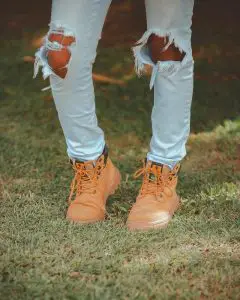The importance and role of 3D in fashion continue to evolve. There’s a notable increase in the interest and awareness of the technology by designers. The growth of curiosity about 3D is from across all spectrums, including high-end and low-end fashion. 3D involves using one machine to create a 3-dimensional object by joining layers of material together.
This article will walk you through the gradual rise and revolution of 3D printing in fashion. We’ll also explore the advantages of 3D printing and why it will emerge in the future.
Features of 3D Printing in Fashion
3D printing allows fashion designers to expand beyond traditional sewing techniques. Designers can easily explore challenging design concepts and make them a reality using 3D printing. 3D printing in fashion allows us to experience an evolution from traditional textile production methods toward a textile that’s 3-dimensionally grown. Materials that are digitally created offer you broad possibilities because you can embed various physical properties to be embedded in many defined areas of the textile. This means you can create waterproof, flexible, opaque, and even rigid materials, then combine them. This way, you can have all the properties you’re looking for in a single cloth.
There’s no need for a specific mold with 3D printing; designers can simply create complex geometries and structures. Although these structures are aesthetically pleasing, they can also be functional. An example is a garment that you need to hold together; instead of using traditional buttons, adding a locking functionality directly into the textile is possible with 3D printing in fashion. The diverse opportunities for customization present in 3D printing are one of its main benefits for the industry. You can now create clothes that perfectly fit the size and curves of every part of the body. This allows for true personalization in fashion. These abilities enable 3D printing to branch into various areas of fashion like sportswear, leisure, and even medical care. Since 3D is a new domain in fashion, designers do not know how much design freedom 3D printing in fashion provides.
Benefits of 3D Printing in Fashion
There are various benefits of 3D printing in fashion. However, below are some of the fashion industry’s top benefits of 3D printing.
- Designer clothing is expensive since its purpose is to fit one’s body. This is because designer clothes are unique, rare, and difficult to obtain. On the other hand, 3D printing changes the equation and makes custom-designed clothing a mass-market concept.
- It is an environmentally friendly option and minimizes waste. Additionally, the traditional designing process usually leads to enormous textile scrap wastage. Dyes used in the designing process are a significant source of water pollution.
- 3D printing helps address most issues like water and air population caused by textile production giants like China.
- It allows designers to create faster, which significantly reduces their lead time.
- It is transformative for top fashion companies as it increases the speed of market and supply chains. Companies can print garments, accessories, and many more within 24 hours. Due to this, the rate of changing style increased significantly.
- 3D printing can bring new styles to stores very quickly and efficiently. It, therefore, provides the efficiency companies need to evolve in the fashion industry.
Top Aspects of 3D Printing in Fashion
One can use 3D printing in fashion for different accessories, manufacturing and prototypes, and many more. Using 3D in various aspects can boost your sustainability efforts and expand your customization options.
3D Printed Fashion Accessories
Instead of traditional printing on a full clothing item, 3D printing in fashion allows you to support various parts of a whole design. This includes accessories, embellishments, buttons, and many more. You can easily integrate accessories into your outfits using 3D printing. Some materials like TPU are flexible and make it easy to add precious pieces and embellishments to the garment. In addition, 3D printing is excellent for analyzing costume jewelry with complex designs and shapes.
Prototyping and Tooling
Another common use of 3D printing in fashion is in the manufacturing department. 3D printers are great for prototypes and tools. This is common in various industries, and fashion is no exception. A typical example is Camper; this is a Spanish shoe manufacturing company that utilizes BCN3D printers to develop multiple prototypes and concept models for different shoe collections the company designs and creates.
The company used to outsource the production of shoe models. However, this significantly increased the cost and time of the design manufacturing process. However, with the evolution of several 3D printers, their designers have a better understanding of the shapes and volumes of the design process. 3D printers enable designers to take more design risks because they can assess and visualize their designs. In addition, by prototyping different designs, designers have more time and freedom to explore innovative designs.
Achieve Sustainability
3D printing in fashion gained more popularity because it promotes sustainable fashion. As more brands and fashion designers draw their attention to sustainability when creating their collections. An example of a brand that uses 3D printing to achieve sustainability is the Spanish fashion brand ZER. This brand uses additives throughout its designing, manufacturing, and creation process. This helps them to become a sustainable force in the fashion industry.
ZER utilizes different 3D printers to create patterns and then print only the product they need. This allows them to minimize wasting resources on various garments. This also ensures that the manufacturing process does not destroy the environment.
Customization
Finally, 3D printing in fashion provides vast opportunities for customization. Various fashion brands can start producing different fashion pieces based on specific requirements and body parts. One top brand that uses 3D printing for customization is Adidas, a German-based sportswear company. This company has been experimenting with this concept since 2015. Using running data from various athletes, the company uses 3D printing to design a shoe that provides the optimal fit for different runners during sports. Adidas continues to experiment with multiple repetitions and modifications for the 3D shoe to date.
Innovative 3D Printed Fashion Pieces
For the past few years, 3D printing in fashion has continued to gain popularity. It is continually integrated into the fashion industry, especially the haute couture section. This is because it allows more creative innovations in designs. From dresses to shoes, 3D printing application is unique, sustainable, and personalized, and gives another reason why 3D printing in fashion is prominent. Below are some of the notable 3D-printed fashion pieces over the years.
Annie Foo’s 3D Printed Shoes
Annie Foo is one of the most famous designers in the fashion industry. This designer is famous for high-end shoes that use 3D printing technologies in their manufacturing process. Combining conventional shoe manufacturing methods with modern materials and technologies creates something unique. This is unique because of the 3D modeling software it utilizes. With this, Annie Foo develops complex shapes that give their shoes a unique aesthetic look.
The Proximity Dress
Anouk Wipprecht, a Dutch designer, is famous for combining new technology with traditional methods in the fashion industry. This helps the designer to create dresses known as the proximity dress. Anouk made this dress in the context of the COVID health crisis; it includes various sensors that allow the wearer to detect movement close to them. If another person gets too close to the dress wearer, the dress automatically expands to create a barrier between the wearer and the other person.
3D Printing and Nature
Iris Van Herpen is amongst the best 3D printing designers in the fashion industry. Her interest in 3D technologies is one of the reasons most people know her. She’s known for various popular 3D collections presented at multiple Fashion Week events. One of her notable collections is the Ludi Naturae. This is a nature-focused collection that includes a Foliage dress with a 3D printed sheet-like pattern. Iris Van Herpen uses a PolyJet 3D printer that allows her to create 0.8mm thick sheets based on tulle. In addition, this fashion designer collaborates with the United Nude brand to create 3D-printed shoes.
Julia Daviy’s Zero-Waste 3D Printed Skirt
Since 2017, Julia has been working in 3D printed fashion due to her attraction to the freedom it provides them. It also offers different options in terms of structure and choices. Her first 3D printed garment was the Zero Waste skirt, which was 3D printed and personalized. This skirt gained popularity because Julia Daviy proved that the 3D printed skirt produced less than 1% waste during the production process. This is because she used recyclable filaments.
It was more important to her because she used 3D printing to begin a new fashion world, allowing her to move away from mass production and towards eco-friendly manufacturing. While moving towards an eco-friendly manufacturing process, 3D printing in fashion allows her still utilize the full potential of available materials.
VIP TIE
This is an Italian company famous for 3D printing ties. The goal of this company is to provide fashionable and personalized accessories to satisfy the desires and needs of its customers. The VIP tie brand is entirely luxurious, and it utilizes a high-tech design. The designing process of one tie usually includes several materials and complementary procedures. Some of them include embroidery, mother-of-pearl, silver, exotic leather, craftmanship, carbon fiber, etc. Additionally, the special feature of VIP TIE is that 80% of the materials used are entirely environmentally friendly.
The Future of 3D Printing in Fashion
3D printing in fashion has numerous benefits. Architects and fashion designers utilize 3D printers for making clothes, jewelry, accessories, and many more. Once 3D printing becomes common, all designers would find it easy to utilize it with various features like adding patterns and prints to garments right from the comfort of their home. However, 3D printing in fashion might not be achievable in low-cost countries.
There could be several stores where customers can simply work in and print 3d fashion items in the future. Today, many top fashion design schools and institutes have 3D printers present on their campus. They also offer courses on 3D printed fashion.
Final Thoughts
In today’s world, 3D printing in fashion makes various developments important because it revolutionizes production and trades in the fashion industry. For example, it allows customized clothes, shoes, and accessories to come out of the 3D printer. Furthermore, 3D printing opens up new possibilities for 4D printing and many more 3D processes to take fashion design to the next level. Overall, the entrance of 3D printing into the fashion industry proved beneficial for the industry and holds potential for the future.







